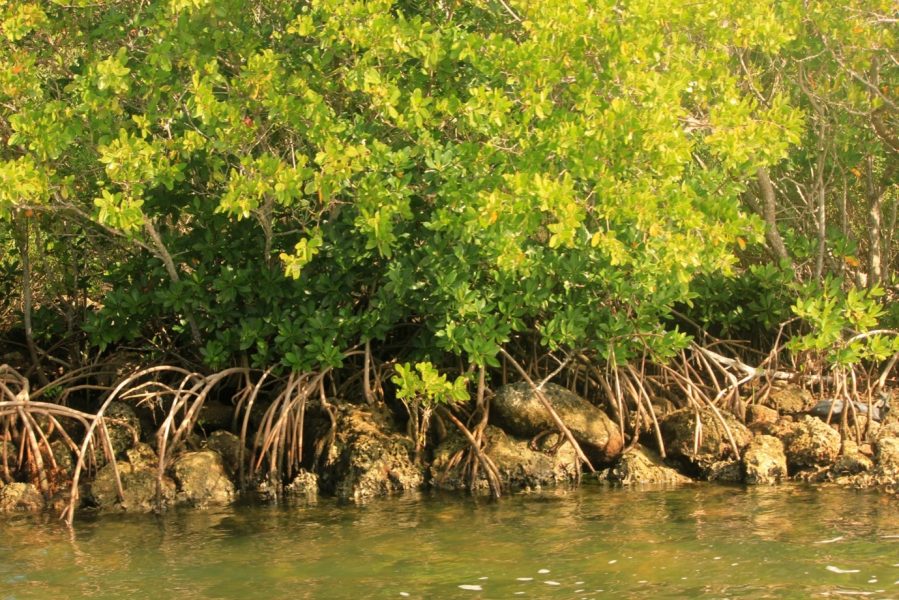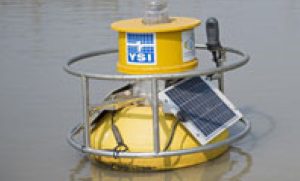
CAG flags gross violations of environmental norms at Ramsar sites
Two CAG reports point out illegal constructions at Vembanad Lake in Kerala as well as at East Kolkata Wetlands and Sunderbans in West Bengal, and mismanagement of funds at Chilika Lake in Odisha

Two separate reports of the Comptroller and Auditor General (CAG) have flagged violations of environmental norms in at least four Ramsar sites in the country.
The CAG report on ‘Conservation of Coastal Ecosystems’, tabled in Parliament on August 8 containing observations of performance audit for the period 2015-20, pointed out illegal construction on islands at Vembanad Lake in Kerala and mismanagement of equipment at Chilika Lake in Odisha. Another CAG report, presented in the West Bengal Assembly earlier, raised red flags on violations of environmental norms at East Kolkata Wetlands (EKW) and Sundarbans in the state.
Illegal resorts at Vembanad Lake
Vembanad Lake is the largest in Kerala and designated as a Critically Vulnerable Coastal Area. With an area of 2,033 sq km and a maximum length of 96.5 km, it is the second largest Ramsar site in India. “The Vembanad ecosystem is under developmental pressures from irregular reclamation and construction in and around the lake area,” said the CAG report.
Also read: Water-guzzling aquaculture eating into paddy lands in coastal Andhra
It pointed out that Kerala State Coastal Zone Management Authority (SCZMA) received a complaint in June 2018 about the construction of a resort in Nediyathuruthu island in Panavally panchayat of Alleppey district. “As per approved CZMP (Coastal Zone Management Plan) for the region, the island is designated as No Development Zone. The Supreme Court in January 2020, declaring the resort an encroachment in the lake region, directed the demolition of the resort,” the report said, adding that “it was found that the resort is yet to be demolished.”
Not only that, the report said, one more resort is coming up on another island in the lake. “These islands formed a part of the No Development Zone in the lake region under CRZ (Coastal Regulation Zone) notification,” it noted.
“While analysing the satellite images of the project area, audit identified another resort, Grand Ayur Island in Anjuthuruthu island in Panavally panchayat,” the CAG report further said.
Illegal constructions in Sundarbans
The other CAG report presented in the West Bengal Assembly also bemoaned a similar lack of penalties in ecologically fragile areas in the eastern state. “There were illegal constructions in the EKW (East Kolkata Wetlands) and CRZ area in Sunderbans. However, such violations even in these ecologically fragile areas were rarely found to have been penalised; on a couple of rare occasions, (when) they were done, it was in compliance with Kolkata High Court orders,” the report said.
EKW, a unique peri-urban ecosystem that lies on the eastern fringes of Kolkata, covers an area of about 12,500 hectares, spread over the state’s South and North 24 Parganas district. The CAG report pointed out that failure to delineate boundaries of the EKW and uncontrolled transfer of land resulted in the change of character of the EKW and lack of effective action by the East Kolkata Wetland Management Authority (EKWMA).
“In the absence of effective measures by the EKWMA, water bodies were dried up and filled illegally. Since 2007, the EKWMA has identified 357 cases of violation, out of which 101 cases were identified between December 2015 and March 2020,” the audit report pointed out.
It further added that on scrutiny of show-cause notices issued to 101 violators, “51 cases were of construction of unauthorised two/three storied buildings, marble godowns, motorbike and car showrooms, 23 cases of drying up and filling of water bodies and 27 cases of construction of boundary walls in the EKW area; these altered the ecological character of the wetlands and therefore were in gross violation of the EKW Act”.
Violations by a religious authority and encroachment of wetlands by plastic industries have also been flagged in the report. It pointed out that a change in land use pattern was observed in the Bhagabanpur mouza (unit), where “areas under full water bodies and embankments decreased from 522.94 ha in 2002 to 116.07 ha in 2016 due to encroachment. The study further revealed that in the mouza, out of 47 bheries (fish ponds) functional in 1998, only 10 bheries were left in 2017. Thus, the EKWMA had failed to preserve the wetlands in the Bhagabanpur mouza”.
The CAG also pointed out that the State Wetland Authority had not constituted the Wetland Mitra (Citizen’s Network) till March 2020.
It further flagged a hovercraft station in Frazerganj in South 24 Parganas district. “The Indian Coast Guard (ICG) applied (September 2017) for setting up a hovercraft station in Frazerganj,” it stated. According to the site plan, the ICG would construct a guard room, officer’s mess and accommodation, park, fuel bunk, sailors institute, holiday home and a playground.
“Though CRZ notification disallows the construction of residential buildings in the NDZ, CRZ clearances by the West Bengal State Coastal Zonal Management Authority for constructions of buildings…was against notification,” the report stated.
Eco-tourism project in Sundarbans
The audit report also pointed out a delay in CZMP, construction of multi-purpose cyclone shelters without clearances of CRZ norms and construction of three helipads and VIP rest houses in ecologically sensitive areas in the Sundarbans.
It has highlighted serious violations of CRZ norms, particularly at an eco-tourism project at Jharkhali. The West Bengal government, the report said, had undertaken in October 2015 an eco–tourism hub project at Jharkhali in Sundarbans after clearing 69 acres of mangrove. “Even the river channel, the breeding place of crocodiles, was claimed by the project,” the audit said.
Also read: Coastal littering is not just dirty beaches; it has major consequences
According to the Forest Department Report, in 2014, around 70 baby crocodiles were rescued from the channel. However, “the same channel was closed to build new roads to the tourism hub,” the CAG report observed. The other points raised were about a tiger rescue centre and a children’s park constructed on the banks of the Haribhanga river in the Sundarbans by cutting mangroves, which was not permissible under CRZ notification. The development of a butterfly garden, a children’s park and a tourist centre contradicted the rationale for the establishment of the tiger rescue centre, the report further pointed out.
De-weeding project at Chilika Lake
In the case of Odisha’s Chilika Lake, the CAG report on ‘Conservation of Coastal Ecosystems’ flagged mismanagement and diversion of machinery and equipment. The auditors pointed out gaps in the de-weeding exercise of Chilika Lake, a brackish water lagoon spread over the Puri, Khurda and Ganjam districts of Odisha. Also a UNESCO World Heritage Site, Chilika is the largest lagoon in India.
The report said: “For effective management of the Chilika Lake ecosystem, a study revealed that the northern sector of this ecosystem was getting infested with an invasive weed, Phragmitis karka, on an area of nearly 150 sq km, considerably reducing the water holding capacity of the lake.”
To address this issue, a multi-purpose Amphibious Weed Harvester (AWH) was procured in December 2018 under the Integrated Coastal Zone Management Programme (ICZMP) at a cost of Rs 2.14 crore. “Audit observed that the machine was handed over to the Chilika Development Authority (CDA) at Ansupa lake, a freshwater lake, instead of the research centre at Chilika Lake, which had entered into the agreement for the procurement of the weed harvester,” the audit pointed out. “It was also observed that the deployment of the machine at Ansupa Lake was more than at Chilika, where the weed infestation was major,” it added.

Pointing out that the effectiveness of the weed harvester remained unassessed at Chilika for which it was procured, it said that that though the CDA furnished satellite images of de-weeded area of Ansupa Lake, it could not furnish the data regarding the area de-weeded at Chilika.
The report also raised a red flag on the deployment of sensor-mounted floating data buoys at the lake. “The CDA had been collecting water and sediment samples from 30 pre-determined stations of the lake at an interval of 30 days. As the salinity gradient of the lake changes with every tidal cycle, the monitoring of the lake at an interval of 30 days was found inadequate,” the CAG said.
To address this issue, CDA decided to deploy sensor-mounted floating data buoys, powered by solar panels, at 10 strategic locations in four ecological sectors of the lake to monitor various parameters. These parameters were to be measured in each station on a real-time basis and transmitted to the modelling computer at the Wetland Research & Training Centre at Chilika. Ten Water Quality Monitoring Buoy System (WQMBS), 12 multi-parameter Water Quality Monitoring System (WQMS) with sensors and one Control Centre Data reception were purchased and installed in October 2012 at 10 different locations in Chilika lagoon at Rs 2.69 crore.
But, CAG said, “On scrutiny of records, we observed that within one year and four months of deployment, out of 10 WQMBS, six were stolen and only four buoys were in operation as of June 2016. Also, the pH data had not been received from any of the buoys since 2014. Thus, without complete and continuous data from 10 stations, the monitoring of Chilika Lake despite an expenditure of Rs 2.69 crore could not be achieved by the Chilika Development Authority”.


